Of Food, Life and Death: A Look Back at Mohamed’s Story
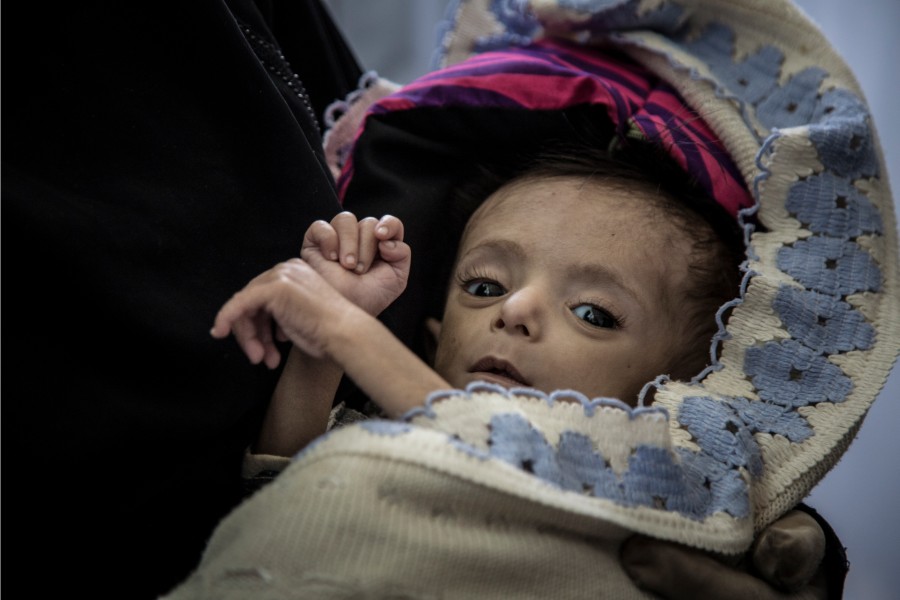
United Nations World Children’s Day was first established in 1954 and is celebrated on November 20th each year to promote and improve children’s welfare. On the same date in 1959, the UN General Assembly adopted the Declaration of the Rights of the Child and in 1989 it adopted the Convention on the Rights of the Child.
So today is the right day to revisit this story from Yemen. Two years ago, Mohamed became a tragic example of the millions of children around the world every year who fall victim to the most vicious pairing: conflict and hunger.
Conflict is the number one driver of hunger, and Yemen is the most conflict ridden country in the world. More than two thirds of the population doesn’t know if or when they’ll eat another meal, and, despite our efforts, a child in Yemen dies every 10 minutes from preventable causes.
This is his story.
In episode 31 of Hacking Hunger, United Nations World Food Programme (WFP) cameraman Marco Frattini reflects on his experience documenting the world’s largest humanitarian crisis in Yemen. His words are transcribed below.
I was in Hajjah when I learned that Mohamed, a little boy I had photographed a few days before at Al Sabeen hospital in Sana’a, had died. At 8 months old, he was the same weight as my daughter at birth. When I heard the news, I felt sadness. Guilt, even. I’d posted a photo of him on social media: a beautiful black and white shot — artistic, you could say. I immediately reached for my phone to take it down, but there was no signal. It felt inappropriate for it to stay there. I thought of Mohamed’s father, sitting on his bed, holding his hand. He’d signed consent for the photo to be taken and used, but that was when his boy was still alive — and now he was dead.
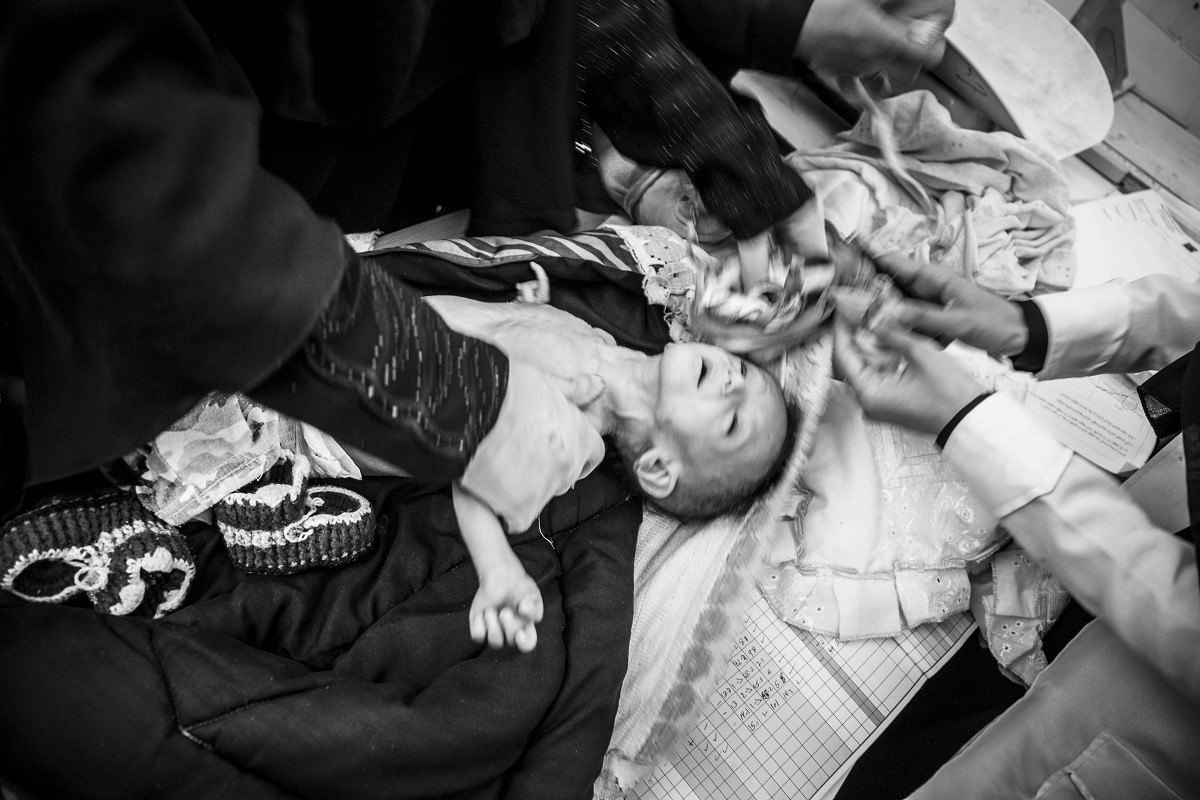
Mohamed, 8-months old, at Al Sabeen’s hospital in Sana’a.
This was my fifth trip to Yemen. Every time, I visited the same hospitals. Every time, it was worse than the last. Even before the war, the malnutrition wards were always full. Poverty took care of that.But this time, something was different. Not only were there not enough beds, or medicines: if you went back after a few days, some of the children you’d seen the previous time were not there any more. You wondered what happened to them. You knew. And you pushed away the thought to keep working.
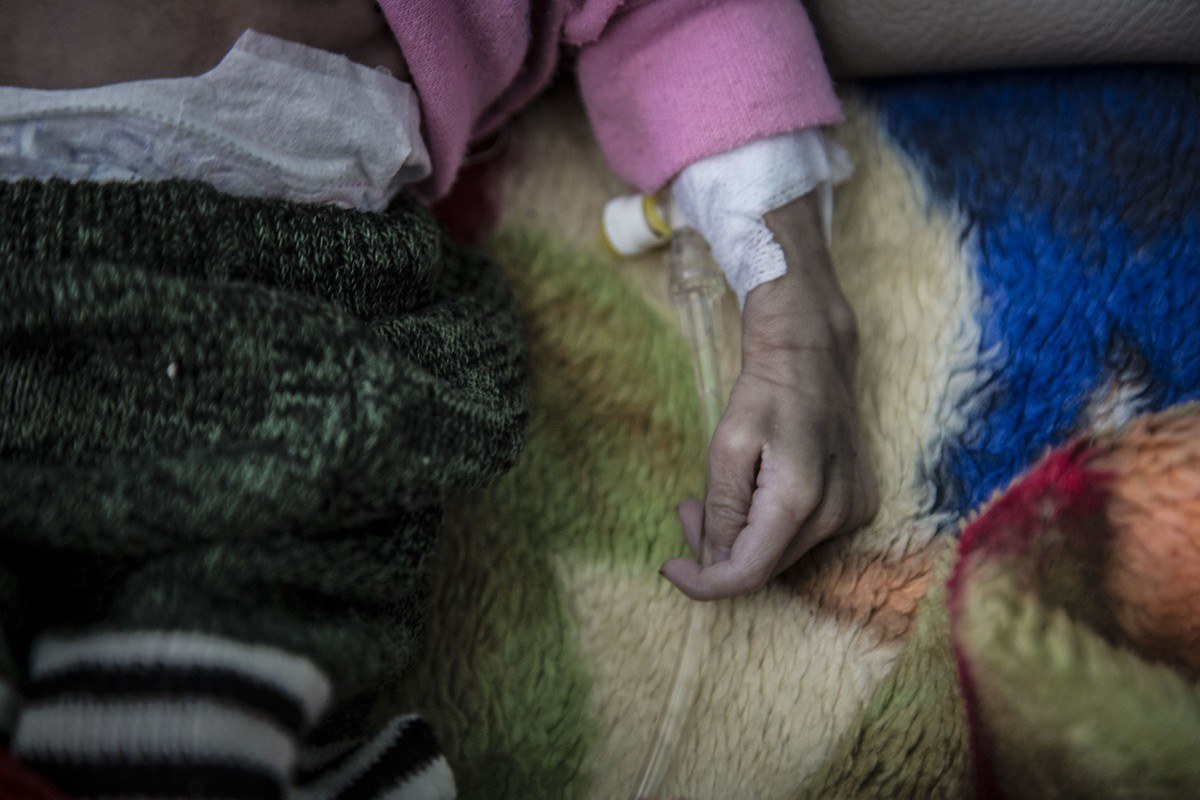
More than three million pregnant and nursing women and children under 5 need support to prevent or cure malnutrition.
You can’t help wondering how long these children have not been fed properly. You hear the stories of mothers so undernourished they can’t breastfeed, who boil the same handful of rice over and over again so they can give the water to their babies to drink. You almost find yourself asking ‘why have they waited so long to bring their children to hospital?’ Then you speak to the parents, each story echoing the next. The fathers — the sight of so many of them by their children’s bedsides surprised me, compared to what I’d seen in other countries — had lost their jobs when the war started. The lucky ones would work three, four days a month as casual laborers, in kitchens or building sites, for wages as low as $1 a day. They had sold everything they had to get by. And when it got really bad, it was difficult to scrape together enough money to travel to the nearest hospital.
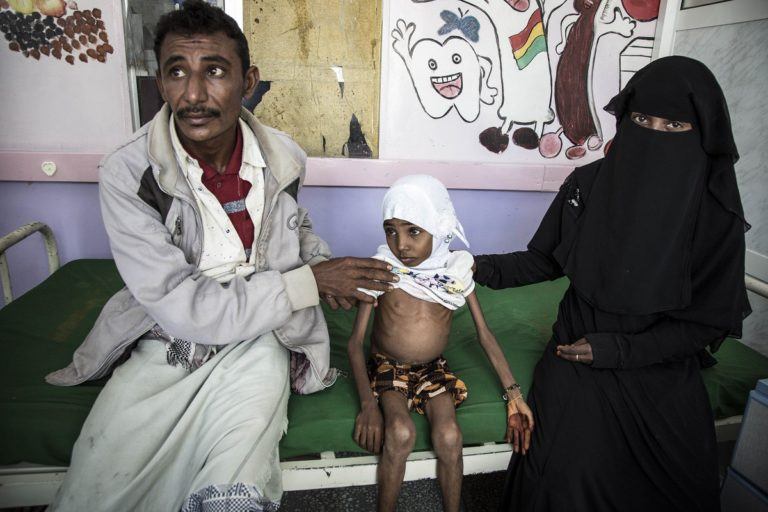
One of the many fathers I met visiting malnutrition wards in Yemen.
You have to harden yourself to see and hear all of this, find some kind of ‘protection mode’ in which you can operate. Watching things through a lens helps you maintain a certain distance. But they stay with you.
Sometimes during this trip I would force myself to cry at night, to let out the emotions bottled up in the day. I would call home to share my feelings. After Mohamed’s death, my wife told me I shouldn’t remove his photo from my social media profiles, that it was a testimony of the tragedy unfolding in Yemen, that it would help the world to know and take action. That made me feel better, but I sometimes doubt that this is really the case. A place like Yemen makes you wonder about the limits of humanitarian work.
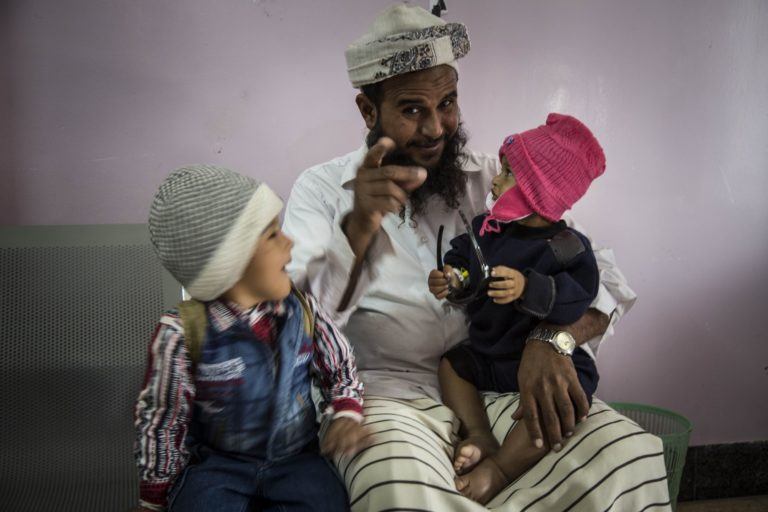
One of the many fathers I met visiting malnutrition wards in Yemen.
And yet, amid the debris, hardship and overwhelming sense of sadness, pockets of normality remained. Children played outside in the shadow of old Sana’a’s beautiful buildings. Markets were open, stalls laden with fruit and vegetables people could not afford to buy. Outside a pediatric clinic, a little girl sold colorful balloons — one of the few treats parents could still indulge their children with.
People were happy to welcome us into their homes. Their kitchens were bare, but they would insist on sharing the little food they had. The tray everyone ate off typically contained flat bread and a bit of rice from U.N. World Food Programme distributions, with an almost symbolic presence of meat and a couple of tomatoes. Overall, the quantity of food shared among five or six people was about what one would normally eat.
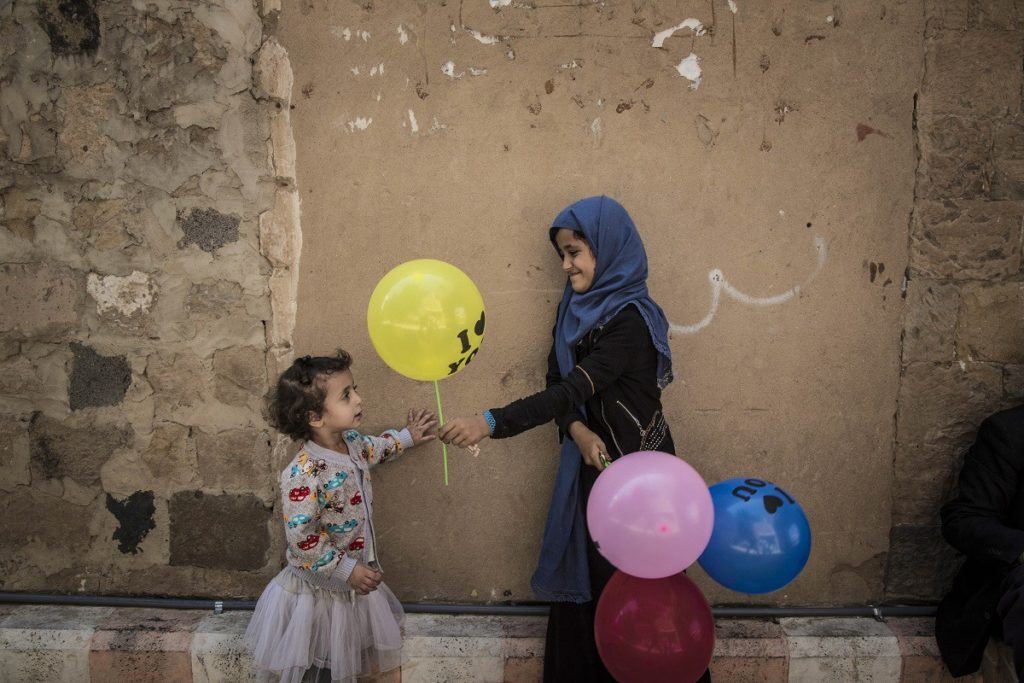
Pockets of normal life survive amid the desolation brought by the war.
Once back on the road, sitting still at red lights, a familiar scene would repeat itself: a woman would walk up to us to beg for a coin, a tiny baby in her arms. The thick armored glass would muffle the sound of her knocking, distort her face.

That distortion of image and sound in my mind expresses the unfathomable distance between us: a distance that keeps growing as I go back to my everyday life. Yemen feels unreal, a dream— or rather a nightmare. I look at my photos, review the footage, and it all comes back to me: the names, the faces, the stories. I catch myself wondering how these people are doing, if they are still alive. And then, I push that thought away.
As told to Simona Beltrami. *Marco Frattini is a video producer at the U.N. World Food Programme. | Learn more about what’s happening in Yemen here, and donate here to support our work there.




